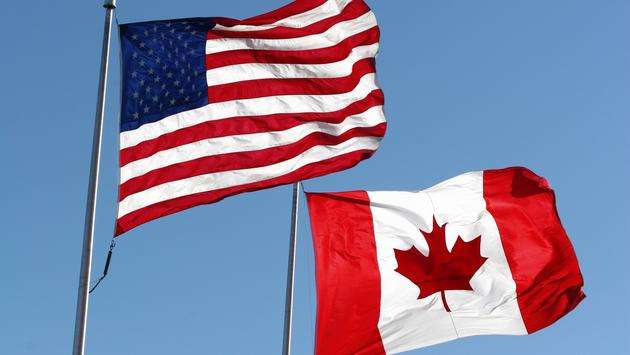Right now, Canada is in the throes of a third COVID-19 wave and is reportedly on track to outpace the U.S. in terms of its rate of new infections relative to the overall population. Worse yet, the country is seeing significant outbreaks of dangerous coronavirus strains that are more transmissible than the original virus and potentially even vaccine-resistant.

The trend is so worrisome that U.S. Centers for Disease Control and Prevention (CDC) has updated Canada’s travel advisory (a Level Four—the highest possible risk category) to include a warning that even fully vaccinated Americans should not risk venturing north of the U.S. border. The change was made on the same day that the CDC released new travel guidelines for vaccinated Americans in which the agency said that those who are fully vaccinated can safely move about the country.
“Because of the current situation in Canada, even fully vaccinated travelers may be at risk for getting and spreading COVID-19 variants and should avoid all travel to Canada,” the website now reads. “If you must travel to Canada, get fully vaccinated before travel. All travelers should wear a mask, stay 6 feet from others, avoid crowds, and wash their hands.”
For a full year now, the Great White North has kept its case counts comparatively low while the health crisis in the U.S. continued to escalate. So, what happened?
Firstly, the pandemic situation in America is finally improving, thanks to a massive nationwide vaccination campaign and the government’s having secured an ample supply of the COVID-19 vaccine, while our northern neighbor’s vaccination efforts have trailed behind those of many other nations.
The U.S. has thus far managed to get roughly 19 percent of its population fully vaccinated, while Canada can say the same of only about two percent of its population. The National Post reported that, as of April 6, roughly one-third of Americans had received at least the first shot of a COVID-19 vaccine, while only 16 percent of Canadians had gotten at least one dose.
Johns Hopkins University’s dataset this week revealed that the U.S. was seeing about 196 new COVID-19 cases per one million people per day, while in Canada about 180 new cases per million people were being added daily (based on a seven-day rolling average). Noel Gibney, a professor emeritus in the faculty of medicine at the University of Alberta, said that it’s almost certain that Canada will surpass the U.S. in terms of community spread in the next few days.
The infiltration of more contagious, and possibly even more deadly, viral variants is being blamed for causing Canada’s third COVID-19 wave. According to a Vice report , Canada is one of the world’s only countries to be battling significant outbreaks of three different variants at the same time.
In Alberta, experts believe that the B.1.1.7 U.K. variant has almost entirely replaced the original COVID-19 strain. The P1 variant that emerged in Brazil—which has reinfected people who have previously contracted and recovered from COVID-19 and may be vaccine-resistant—is also spreading in Canada, as is the B1351 variant that first came from South Africa.
Just as Americans are being warned to stay away, Canada’s health officials are also beseeching Canadians to avoid nonessential travel within the country; although experts are saying that tighter travel restrictions may not be enough at this point to contain the spread of the highly transmissible variants.
Ashleigh Tuite, an infectious disease epidemiologist and assistant professor at the University of Toronto's Dalla Lana School of Public Health, remarked on the variants’ prevalence within Ontario, “It's incredibly widespread, so I think there's merit in restricting movement between areas...But as a way to control the spread of variants? That ship has likely already sailed."






Leave a Comment